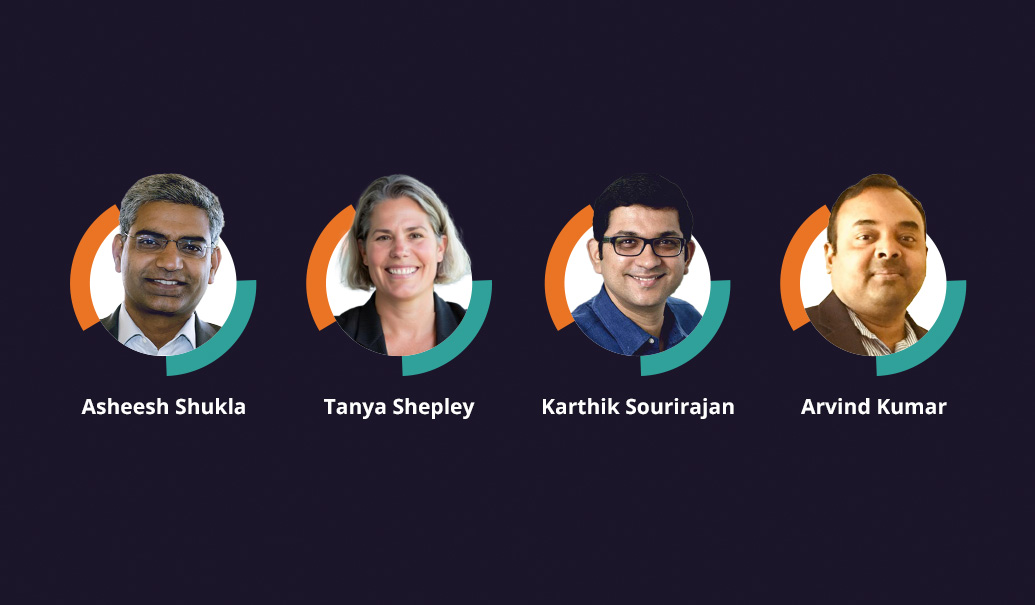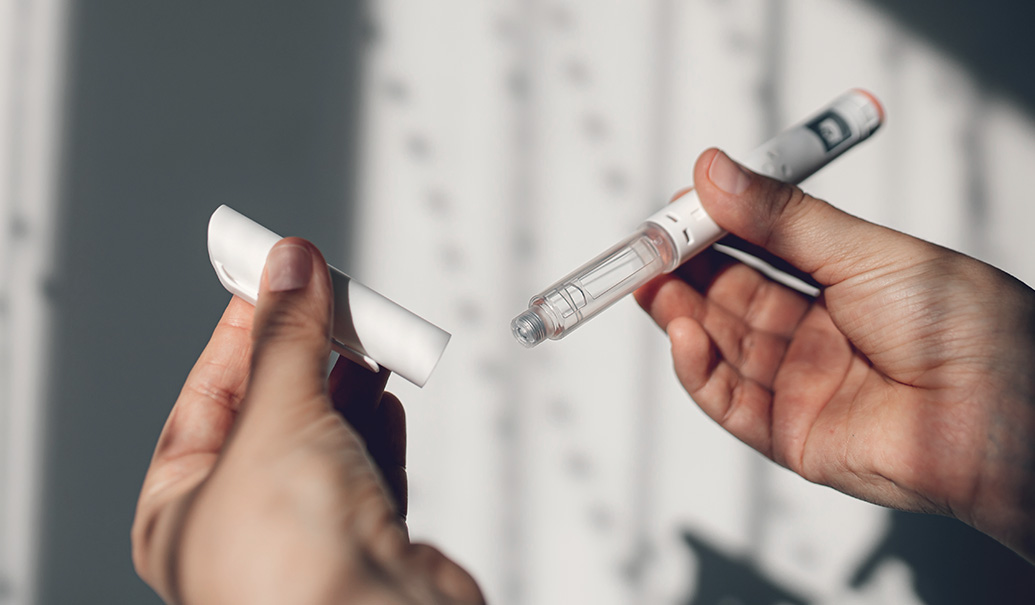Nontraditional players like technology companies have been eyeing the healthcare sector for some time. They come with deep expertise in leveraging data to boost the customer experience, but they’re less attuned to the complexities of the U.S. healthcare system and how its various components fit together. That’s where biopharmaceutical companies come in: They can combine their go-to-market know-how with this data-driven approach. It’s an opportunity to work alongside new healthcare ecosystem entrants for mutual benefit and better customer value.
When we think of the “outsiders” angling to disrupt healthcare, tech giants like Microsoft, Apple and Alphabet come to mind. But Amazon often tops the list of contenders, and for good reason. In the last year alone, the company launched a digital pharmacy, expanded telehealth and primary and urgent care services for its employee base and signed on the first outside employer to its app-based care program. The latest buzz includes plans to open retail pharmacies and offer at-home diagnostics. What’s the motivation behind these moves? To entice customers with a better experience, make healthcare more convenient and use the data to build a more robust platform. In other words, it’s likely a long-term strategy to collect and analyze data to paint a complete picture of customer behavior.
Data and convenience could be the winning combination for healthcare
The COVID-19 pandemic reinforced our penchant for convenience, namely the desire for human-free transactions without leaving home. Consumer shopping habits in 2020 bear witness to this shift, with U.S. merchants reporting $861 billion in online revenue, up 44% from 2019 estimates, according to Digital Commerce 360. Of that, Amazon accounted for nearly one-third of U.S. ecommerce sales.
“We’ve grown accustomed to quick, easy and convenient solutions and it’s only natural that we’d want a similar experience with healthcare.”
We’ve grown accustomed to quick, easy and convenient solutions and it’s only natural that we’d want a similar experience with healthcare. Given its mission to be “Earth’s most customer-centric company,” Amazon’s investments in everything from prescription drugs to at-home medical tests will serve to attract and retain new customer sets. Providing more convenient healthcare solutions could be the key to seeing the number of Prime subscribers—currently sitting at about 149 million U.S. members—continue to edge up. And, the over-65 crowd likely is the main target since 89% take at least one prescription drug and more than half (54%) take four or more.
It’s entirely possible that Amazon is thinking beyond simply selling an item (or building the number of Prime subscribers). The online retailer could be planning to combine the data collected from drug and diagnostic purchases and health-related product searches with everything it already knows about its customers. After all, Amazon knows our shopping habits, food preferences (Whole Foods), entertainment choices (Amazon Prime streaming service), sleep and activity levels (Amazon Halo) who comes to the front door (Ring), music selections, purchases made outside Amazon (Signature Visa card and Amazon Pay), and every question posed to Alexa. Maybe Amazon’s long game is to complete the data circle.
If successful, Amazon will own the customer experience on everything, including health. The customer insights will attract suppliers and help Amazon to build a network. The tech company will do this over five to 10 years, will do it better than anyone else, and will edge out healthcare stakeholders’ fledgling efforts to be patient-centric. That is unless traditional healthcare ecosystem players like biopharma companies step up and recognize the opportunity to tap into the capabilities that the “outsiders” bring to the healthcare landscape.
We can’t underestimate the importance of collecting this type of data. What food we eat, where we live and how much money we make are just a few of the factors that can have a great impact on our current and future health. In fact, social determinants of health (SDOH) determine about 80% of healthcare outcomes and far outweigh the impact of the medical care we receive. These datasets can be used to first understand and predict consumer behaviors and then to design and offer desirable services, and that alone should pique the pharma industry’s interest.
More entrants could expand biopharma’s partnership opportunities
Tech companies aren’t the only ones seeking opportunities in the healthcare market. Retailers and large employers also are looking to make healthcare more convenient as they collect data from every customer interaction. With its acquisition of telehealth provider MeMD, Walmart has expanded its virtual care footprint nationwide. CVS Health has established a venture capital fund solely focused on discovering digital health disruptors. JPMorgan Chase is once again trying to provide better medical care to its more than 165,000 workers, but this time is going it alone.
In parallel, traditional healthcare players like provider organizations, health plans and biopharma companies are making deeper investments in SDOH, devising ways to simplify healthcare for individuals and working to improve health outcomes. Data sits squarely in the center of all such efforts. It’s the key to engaging patients and preventing healthcare events before they happen. But it needs to be collected and analyzed in a more productive fashion than it is today—and so far, traditional players haven’t been able to solve that piece. Partnerships that are built on data could hold the answer, especially when the players have complementary competencies (even if their motivations aren’t 100% aligned).
As it turns out, Amazon won’t need much convincing on the partnership front. TJ Parker, Amazon’s VP of pharmacy, recently told Fierce Healthcare, that Amazon Pharmacy is interested in partnering with healthcare ecosystem players like pharma companies, payers and PBMs “to build a better customer experience.” Customer experience, however, is just one factor that gets a boost when organizations interact, collaborate and partner with other members of the healthcare ecosystem. There are gains to be made in areas like population health management, health outcomes and overall healthcare spending.
There’s also an option—an imperative, really—to predict health events before they happen. It’s fair to say that both Amazon and pharma are motivated to predict customer behaviors to serve up a better experience. And, the data Amazon collects could help pharma companies do just that. By following customer patterns, for example, pharma could be in a better position to solve a problem that’s always eluded the industry: medication adherence. True, pharma wants to sell more products, but health outcomes improve when patients stay on their prescribed therapies.
To play out the Amazon example, some of the data that the tech giant collects is used to predict when a customer might buy something so it can move that item to a nearby warehouse in advance. Presto, the customer gets the item the same day and saves money on shipping. That’s a good example of using data to improve the customer experience without overwhelming them with recommendations. Amazon Pharmacy just needs to figure out how to make a similar model work for customers filling prescriptions.
What would partnering with a tech company, retailer or large employer look like? For drug manufacturers, the answer is, it depends. For most pharma companies, the best bet may be to partner with an organization like Amazon or Walmart on their data efforts. Some pharma companies, for example, have begun to roll out SDOH strategies to help them get a handle on medical care, genetics and other data types to fill out a patient’s health data profile. Efforts to understand what challenges patients deal with on a community level could lead to more inclusive clinical research and better health outcomes. The question is whether companies like Amazon and Walmart have some of the missing pieces to the patient data puzzle.
Pharma’s focus on therapeutic categories—and the related data collected—could be attractive to a potential partner. Amazon has access to a fuller data picture than pharma just by virtue of the wide breadth of industries it plays in but lacks that disease-specific level of detail. Let’s use patients with diabetes as an example. By tapping into Amazon’s data, a pharma company could gain a more complete picture of a patient’s food preferences and nutrition habits and combine that with information collected from the glucometers and other accessories they’re using and what medications they’re taking. By tapping into the most salient data and insights from each entity, the partnership could delve deeper and be more meaningful.
There are a few cautions to keep in mind. While healthcare-related data has become a hot commodity, it’s possible for companies to overdo it. After all, getting customer experience right is a mindset and shouldn’t be driven solely by analytics. Partnering with a pharma company could help Amazon zero in on what’s needed, and what’s not. And then there’s the amount of risk that a pharma company might be willing to take on. In partnering with Amazon, could pharma companies lose control of the patient relationships they’ve been trying so hard to build?
For healthcare ecosystem partnerships to trigger long-term transformation, we’d need to arm tools like artificial intelligence with the right data to usher in care delivery improvements, cost reductions and better health outcomes. Partnering with Amazon would just scratch the surface and likely would take time to bring real change. The data sources would need to go beyond those in the tech giant’s domain to include electronic health records, payer claims, SDOH and consumer health apps. Either way, Amazon—and potentially others—will leave an indelible mark on the drug industry and the broader healthcare ecosystem, even if its effects might not be felt for a decade or more.
Add insights to your inbox
We’ll send you content you’ll want to read – and put to use.















